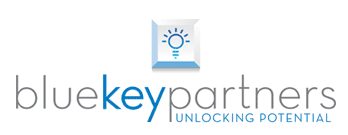What can an advertising executive learn from a vegetable farmer? What can a hospital administrator learn from a high tech start-up?
The answer is…more than you might expect!
I was recently reminded of the power of analogous learning as I accompanied a group of high potential business (city) people on an immersion experience to an organic, sustainable community farm. At first the business leaders seemed rightly skeptical about the value of spending a day with farmers. However, within one hour of beginning the experience, it became clear the many connections that they shared — managing interdependencies of resources, communicating across teams, maintaining customer focus, and creating environments where ideas are nurtured and things (read: products and services) thrive.
Analogous learning is, quite simply, learning from situations and people that are different from your own but share similar attributes. It entails exploring uncommon places for best practices, finding new ways of looking at the paradoxes of management and, most importantly, reinvigorating leaders. The boundaries of analogous learning are set only by the degree of one’s openness and curiosity.
Like weaving a calico quilt, analogous learning involves linking individuals from vastly different industries in deep conversations about their common pursuits around growth, innovation, change, operational excellence and, ultimately, leadership. I am consistently inspired by the quality of dialogue that occurs when thoughtful leaders from different industries and settings are put together. Unscripted and genuine, these conversations quite often reveal essential truths and insights around leading organizations and teams that are agnostic of industry, geography or market maturity.
How is your organization leveraging analogous learning in developing leaders?
Posted on: August 04, 2014

With an improving economy, headhunters are out in force trying to pick off your most promising talent for new opportunities elsewhere. Keeping high potentials engaged (or re-engaging them) is the single most powerful lever to retention that is in your control.
Only a few years ago high potential employees were specifically cited as a segment of the workforce increasingly disengaged in their jobs and with their employers. So much so that in a widely discussed report by the Corporate Executive Board, some 25 percent of high potentials said that they planned to leave their current employers in the next year and about 1 in 5 identified themselves as “highly disengaged.”
More pay, better benefits, more desirable work location, greater flexibility – are all objective factors of a job. These are the tangibles. You may have all the tangibles right – above average pay and benefits, flexible schedules, etc but these alone do not inoculate your company from the threat of losing top talent.
As or more important are the intangibles that increase engagement and commitment of high potentials:
- Challenging work – work that is stimulating and has clear purpose and meaning. The work has some element of stakes to it. Leaders care if the work is done well or not, and leaders are close enough to know the difference.
- Recognition – through higher and differentiated compensation, more job opportunities, participation in development programs and through direct feedback from business leaders.
- Inclusion – feeling that their input is sought and valued from executive leaders and other decision-makers and stakeholders; being placed in positions where new capabilities are demanded; exposure to business leaders that creates a feeling of being “in the know.”
- Autonomy – having the freedom to act and feeling that they have been empowered to make decisions; being made accountable for objectives that are meaningful to the business.
How are you keeping your top talent engaged? Is the senior leadership in your organization acting with purpose to engage and retain top talent by addressing both tangibles and intangibles?
Watch for Part II – When the Headhunter Calls.
Posted on: April 25, 2014


